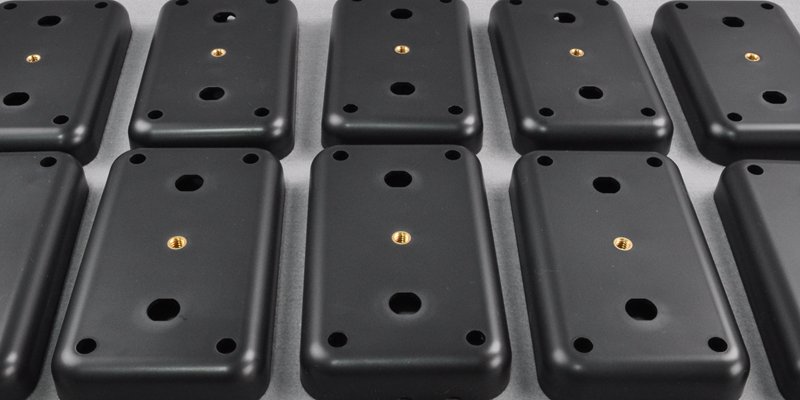- December 29, 2023
Modern manufacturers create different products by merging plastic with metal or other compatible components. The insert molding process is a popular plastic injection molding technology that allows manufacturers to incorporate engineering plastics with inserts (made of a different material) to achieve products with wear resistance, low weight, and improved tensile strength.
It is advisable to understand all about the insert molding process to get a better result. This article discusses the definition of insert molding, its advantages, and limitations. You’ll also learn about typical applications of insert molding parts and helpful tips for practical insert injection molding.
What is Insert Molding?
Insert molding is a plastic injection molding technique that involves installing or merging inserts, especially metal, within an injection-molded part. This technology involves placing the insert in the mold cavity before pouring the molten plastic around the insert under high pressure. As a result, the insert becomes a solidified plastic part upon cooling.
Metal insert molding allows the manufacturing of strong, durable, and lightweight plastic products with metal components. Consequently, it is a widely popular and applicable process in different industries due to its high compatibility and effectiveness.
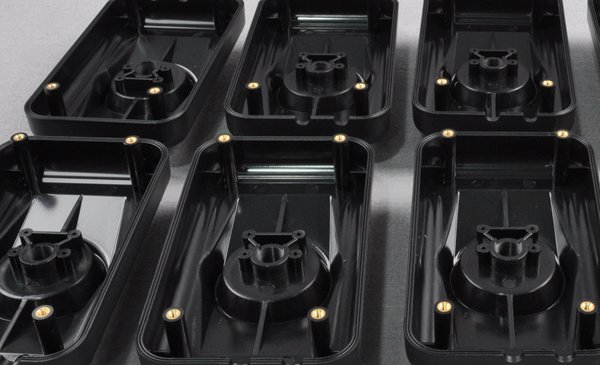
Common Insert Molding Materials
Injection molding is a versatile process compatible with a wide range of materials since it is ideal for merging two different components into one product exterior or top layer in insert molding. Thermoplastic and thermoset materials are primarily used in injection molding due to their strength, sturdiness, or good electricity flow.
- Thermoplastics: Polypropylene (PP), Nylons (Polyamides/PA), polycarbonate (PC), ABS, Polyethylene (PE) and Acetal;
- Thermosets: Polyester, Epoxy, melamine-formaldehyde resins, and urea-formaldehyde resins;
- Elastomers: Polyurethane, natural rubber.
Steps for the Plastic Insert Molding Process
The insert molding process is somewhat similar to conventional injection molding since it involves melting and injecting molten plastics into a mold. However, plastic insert molding involves loading inserts in the mold as the molten plastic floats into the mold cavity. Here is a stepwise to the plastic insert molding process.
1. Load Selected Inserts into the Mold
It would help if you considered the positioning of inserts within the molds when designing the molds for the process. It helps to ensure the insert maintains its orientation and position throughout the molding process. There are two ways of loading inserts into the mold: “automated insertion” and “insertion by hand.”
Two Methods for Loading Inserts into the Mold
Automatic insertion is more precise, consistent, and efficient. It uses robots or automated mechanisms that can resist high-temperature levels to load insert components into the mold. As such, manufacturers often benefit from faster turnaround times since the computerized machines are fast and can mold more parts per hour.
On the other hand, Insertion by Hand/Manual Insertion is ideal for low-volume injection molding since it involves loading the insert components into the mold by hand. Moreover, this procedure is more common than automated since the operator is always present to carefully inspect, package, and assemble the injection mold components, incurring lower additional costs. However, the insertion-by-hand technique may lack high precision and repeatability.
2. Inject the Molten Plastic into the Mold
You must use an injection unit to deposit the molten material into the mold under high pressure. The applied pressure forces the molten plastic to fill the mold evenly. As such, it pushes out air through the vents present in the mold, ensuring the plastic bonds firmly and entirely to the inserts.
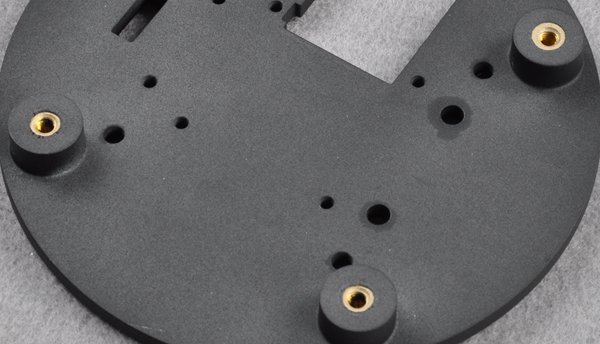
3. Open the Mold and Eject the Molded Part After Cooling
While the molten plastic has filled the mold evenly, it would be best to maintain a set temperature to allow consistent solidification. You must maintain a holding pressure to mitigate potential shrinking effects while preventing backflow into the barrel. However, the mold opens when cooled and allows the removal of the insert-molded part.
4. Separate the Molded Part From the Sprues
Molded parts often get attached to the sprues that helped form them. These sprues are like structures or frames that ensure all components of the molded part are made. You must detach the molded part from the sprue to use the part. However, be more careful when separating the sprues to avoid damaging or affecting the molded part.
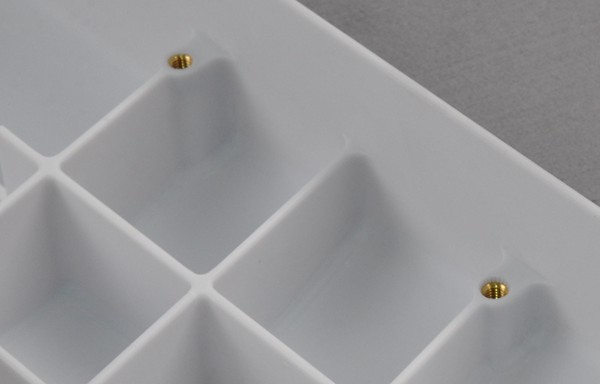
5. Post-Molding Operations
Plastic molds often require certain post-processing operations after molding before they are ready for the market. Amongst the common post-processing treatments widely used for inserting molded components are:
- Deburring: It involves using deburrers to remove excess material affecting the molded part’s physical properties.
- Heat Treatment: Heat treatment is effective for removing internal stress that can compromise the quality of the molded part. It usually involves subjecting the molded component to a temperature 10-20 °C lower than its deformation temperature or higher than the service temperature.
- Humidity Control: This treatment involves bathing molded parts in hot water of 80-100°C. It insulates molded parts from the air, increases moisture absorption, stabilizes size, and prevents oxidation.
Design Considerations for Insert Injection Molding
Although insert injection molding may seem straightforward, the process can be complicated. Here are some helpful design considerations for practical insert injection molding.
Examine the Cost/Budget
Injection molding cost is an essential consideration for cost-sensitive parts. Here, the cost includes the cost of acquiring inserts and contracting an operator. Also, the increase in price per unit that adding an insert would cause is another cost element to consider.
Identify Properties of Selected Insert
You need to know the properties of the inserts you choose for the intended application. The insert molding process involves extreme temperature and pressure. Therefore, your chosen insert must be able to withstand these extreme conditions during the process. As a result, you must examine the material of the insert, its dimensions, and surface finish to decide the ideal molding process.
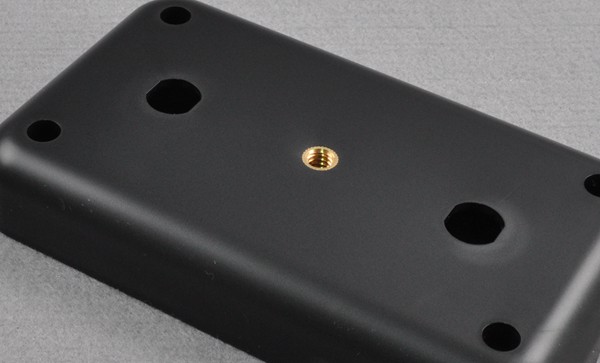
Insert Location
The location of the insert is another major factor as it determines the forces that would act on it over time. Similarly, it would help to consider the intended application of the insert and the amount of plastic required to hold it in place when deciding the ideal location.
More importantly, ensure the insert remains in place throughout the process, as location changes affect the molding process and render the part unusable.
Narrow Gap between Metal Inserts
Maintaining a narrow gap between the metal part inserts in the injection molding design is advisable. It helps ensure the inserts are covered by the liquid plastic injected into the mold, facilitating a solid bond between metal inserts and plastic material. Therefore, it prevents voids and improves the insert molded part’s structural integrity.
Choose the Appropriate Material
During insert injection molding, choosing a suitable plastic material and insert material is essential. Choose strong and durable materials that bond perfectly with each other to prevent plastics surrounding the inserts from cracking.
Typical examples of these plastic injection molding materials include Nylon, ABS, Polycarbonate, and polyethylene. On the other hand, brass and steel are typical insert materials.
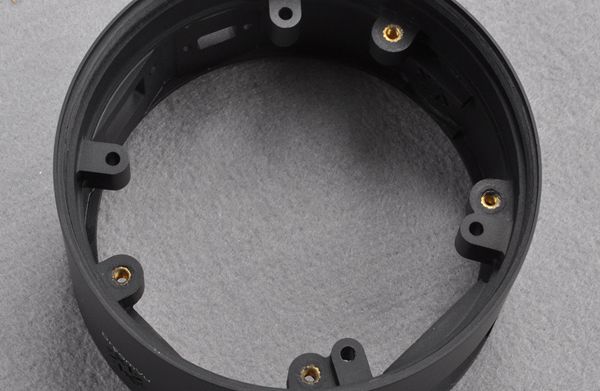
Use the Right Mold
Choosing the suitable mold for the insert molding process is another critical factor. It not only shapes the molten plastic but also holds the insert in position during the operation. Hence, use a well-designed mold that allows a uniform flow of molten plastic and ensures the insert remains in place throughout the molding process.
However, use a mold with rounded corners to ensure the free flow of molten plastic and prevent stress on the mold walls, often caused by sharp corners.
Advantages and Disadvantages of Injection Molding Insert
Insert molding has wide applications thanks to its many advantages. Here are some of the expected advantages of injection molding inserts:
- Injection molding insert minimizes assembly and labor costs since it eliminates post-molding assembly.
- These inserts for injection molding reduce the size and weight of molded products.
- Insert molding offers increased design flexibility, allowing product designers to be as creative as possible.
- The metal inserts strengthen the mechanical properties of the injection molded parts.
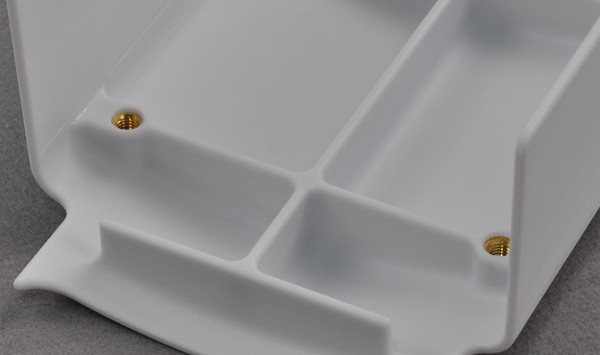
Even though injection molding insert offers a lot of benefits, here are some of its downsides:
- Designing a mold with inserts for injection molding is more costly and complex.
- Injection molding inserts material may be incompatible with the molding process due to differences in thermal expansion rates of inserts and surrounding materials.
- Defects may occur in molded parts and components due to the inaccuracy in positioning the injection molding insert during the molding process.
- Using inserts increases cycle time since the inserts must be accurately positioned in the mold before the process.
Applications of Insert Molding Parts
Insert molded components have a wide range of applications in different industries. Common industries that use insert molding parts include:
Automotive
Manufacturers in the automotive produce insert molding parts as an alternative to metal parts. These plastic insert molding parts are more durable and lightweight. Threaded fasteners, gears, and electrical sensors are common insert molding parts used in the automotive sector.
Consumer Electronics
Manufacturers in the consumer electronic industry often use insert molding to avoid using fasteners and solders during manufacturing. Typical examples of insert molding parts in this industry are digital control panels, knobs for appliances, assemblies, and electrical wires covered by rubber exteriors.
Medical Devices
The healthcare sector benefits significantly from inserting molding parts since plastic components are easier to sterilize. Manufacturers in the healthcare sector use the insert molding process to make different medical devices, including dental instruments, tubes, medical equipment components, prosthetics, medical enclosures, medical knobs, and surgical instruments.
Insert Molding vs. Overmolding Comparison
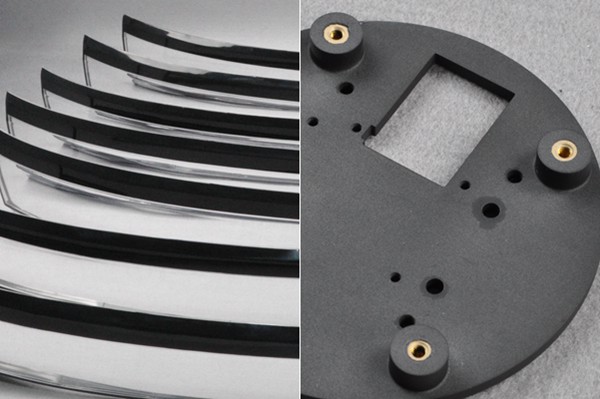
Insert molding vs. overmolding are different injection molding processes often used to produce molded parts that are similar in structure. Both techniques differ in the steps required to achieve the preferred result regardless of their similarities.
Insert molding is a unique technique that involves molding plastic material around a pre-formed insert placed in a mold—the plastic material bonds firmly with the insert to form a single part. Insert molding is a single injection molding process, very fast, and uses less materials
On the other hand, overmolding is a two-shot molding technique that involves molding a rubber-like plastic over another plastic. Overmolding is a twofold injection molding technique, making it more expensive than insert molding since it uses more material.
Moreover, manufacturers employ the insert injection molding process to produce molded parts with improved strength and structural integrity. Overmolding, however, adds comfort, aesthetic appeal, and protective layers to a product.
Get Insert Molding and Overmolding Parts with Experts
WayKen is a rapid manufacturer with reliable insert molding capabilities. So, whenever you need an expert to handle your insert molding or overmolding projects, WayKen is your go-to choice for rapid injection molding services. Our team of skilled and experienced mold operators, engineers, and quality control experts can make insert-molded and overmolded products that meet your requirements.
Conclusion
Insert molding is a common industrial process widely used by manufacturers across industries. It is cost-effective and offers optimal design flexibility by combining metal (or other materials) with plastics, ensuring part reliability and structural integrity.
FAQs
Why are inserts important in injection molding?
Inserts enhance the molded plastic products’ overall strength and durability since they are often made of metal.
Is insert injection molding compatible with large parts?
The insert molding process is best used to create small to medium-sized products. Various challenges such as increased tooling and insert placement complexities, are associated with larger parts.
What are the common inserts used in insert injection molding?
Typical inserts that manufacturers widely use to enhance the strength and functionality of molded parts include metal components (like studs or screws), electronic elements (like connectors and terminals or switches and buttons), and plastic components.

